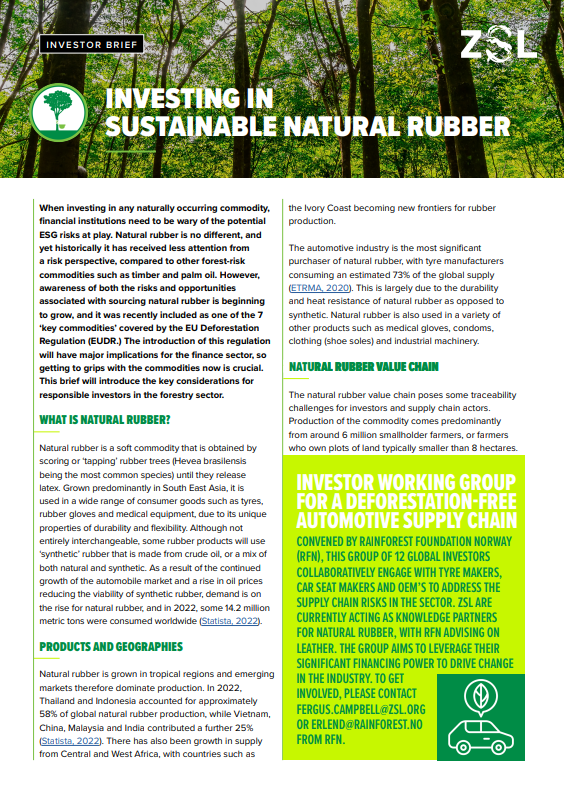Gain insights into investing responsibly in the natural rubber sector through our new guide focusing on key aspects such as value chain, production locations, regulatory framework and ESG risks. Download ZSL’s investor brief on natural rubber.
As financial institutions increasingly consider the environmental, social, and governance (ESG) risks associated with commodities, natural rubber is emerging as a key focus. Historically overshadowed by other forest-risk commodities like palm oil and timber, natural rubber is now gaining attention, particularly following its inclusion in the EU Deforestation Regulation (EUDR). This regulation mandates rigorous due diligence and traceability for forest-risk commodities, highlighting the urgent need for investors to understand the complexities of natural rubber sourcing.
Natural rubber, derived from latex harvested from rubber trees, is a vital material in various products including tyres, medical gloves, and industrial machinery. Predominantly produced in Southeast Asia, it is essential to numerous global industries. However, the sector faces considerable ESG challenges, including deforestation, biodiversity loss and labour issues. With significant production concentrated among smallholder farmers and processing bottlenecks adding to traceability difficulties, investors must navigate these risks carefully.
This brief outlines key considerations and emerging trends for investing responsibly in natural rubber, emphasising the importance of transparency, proactive engagement with industry stakeholders and addressing ESG risks.

